Retro Replay Review
Gameplay
Daytona USA’s home conversion stays true to its arcade roots by delivering adrenaline-fueled racing that challenges players to master each turn and straightaway. The core of the experience revolves around three meticulously designed tracks, each demanding precision as you hunt for the optimal racing line. Whether you’re angling your car just right to clip the apex without grazing the guardrails or timing your boosts to squeeze past the checkpoint timer, the game continually tests your reflexes and track knowledge.
(HEY YOU!! We hope you enjoy! We try not to run ads. So basically, this is a very expensive hobby running this site. Please consider joining us for updates, forums, and more. Network w/ us to make some cash or friends while retro gaming, and you can win some free retro games for posting. Okay, carry on 👍)
One of the highlights carried over from the arcade original is the roster of 40 cars available in the Easy race (later dubbed 3-7 Speedway). Each car handles slightly differently, encouraging experimentation as you chase personal bests. The physics feel weighty but responsive, with enough drift to keep the action exciting without ever feeling out of control. Learning how each vehicle reacts under braking, acceleration, and when you nudge the rails is half the fun.
For home players, the addition of Saturn/PC Mode expands the gameplay significantly. You can tackle the same three circuits without the relentless timer, try mirror variations, and unlock bonus vehicles equipped with special perks—driving on grass or bouncing off barriers without losing speed. The three length options—Normal (arcade-original), Grand Prix (2.5× longer), and Endurance (10× longer)—offer a welcome endurance test, transforming a quick lap dash into a marathon of concentration and stamina.
However, the home edition does lose some multiplayer capability in the transition. Without the arcade’s two-to-eight-player link-ups, you’re left to chase ghosts or local split-screen rivals (where available) rather than competing in larger races. This lack of online or robust multiplayer slightly dims the competitive spark for those who crave head-to-head showdowns.
Graphics
Visually, Daytona USA’s console and PC ports represent a solid effort to capture the arcade’s vibrant style within the hardware constraints of the mid-’90s. Car models remain recognizably blocky but colorful, each sporting distinct liveries that pop against the sweeping curves of the tracks. Textures are simpler than in the arcade original, yet they preserve enough detail to keep environments from feeling flat.
The three tracks—ranging from coastal highways to mountain circuits—feature varied scenery that still holds up today thanks to bold color palettes. Palm trees sway (albeit with limited polygon counts), and distant hills create a satisfying sense of speed. Mirror mode introduces additional visual variety, flipping the world to keep familiar turns unexpectedly fresh even after dozens of laps.
Frame rate dips do occur, especially when multiple cars crowd the screen or during moments of particle effects like smoke trails and tire marks. These slowdowns can briefly disrupt the sense of flow, but they’re generally manageable and never critically impact gameplay. For enthusiasts willing to tweak settings on PC, minor compromises—such as lowering draw distance—can help stabilize performance.
While it’s clear the Saturn and PC versions are doing technical gymnastics to replicate the arcade pedigree, the overall aesthetic remains appealing. Bright trackside signage, bold HUD elements, and the slick animations of cars darting past combine to deliver a lively racing spectacle.
Story
As an arcade racer, Daytona USA doesn’t rely on a deep narrative or character arcs. Instead, its “story” is driven by the rush of competition and the pursuit of faster lap times. From the moment the announcer’s energetic voice kicks in, you’re immersed in the game’s atmosphere—where every checkpoint beep and engine roar becomes part of your personal racing chronicle.
That said, there is a loose framework of progression if you dive into Saturn/PC Mode’s Grand Prix or Endurance lengths. Unlocking bonus cars with special abilities provides a sense of achievement, giving you tangible rewards for your dedication behind the wheel. This light “meta” structure scratches the itch for long-term goals without bogging you down in cutscenes or exposition.
Ultimately, the lack of a traditional narrative is intentional—it keeps the focus squarely on pure racing spectacle. Players looking for dramatic plot twists or character development won’t find them here, but those who thrive on the immediacy of arcade action will appreciate the unfiltered competition.
Overall Experience
Daytona USA’s home ports deliver an authentic slice of arcade racing history. The core gameplay remains as addictive as ever, with tight physics, exhilarating track design, and the ever-present challenge of shaving seconds off your best lap. The addition of mirror tracks, varied race lengths, and bonus vehicles extends replay value far beyond what the original cabinets offered.
Graphically, the game makes smart trade-offs to run smoothly on Saturn hardware and mid-’90s PCs. While you may notice lower polygon counts and occasional slowdowns, the vibrant aesthetics, dynamic camera angles, and iconic visual style ensure the action never feels bland. Music and sound effects—pumping rock tunes and that iconic “Go! Go! Go!” announcer—round out the sensory assault, keeping every race thrilling.
Missing multiplayer options do temper the competitive edge for those who thrive on head-to-head large-scale battles, but local split-screen and ghost challenges still scratch the itch for personal improvement. For retro gamers and newcomers alike, Daytona USA remains an essential experience—an arcade classic translated into a home environment with passion and care. If you crave pure, unadulterated speed and don’t mind a handful of technical concessions, this port is well worth your time and dime.
 Retro Replay Retro Replay gaming reviews, news, emulation, geek stuff and more!
Retro Replay Retro Replay gaming reviews, news, emulation, geek stuff and more!
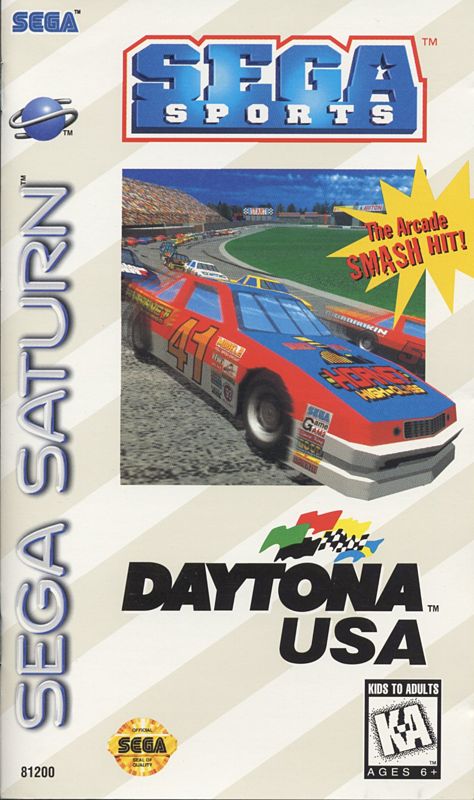
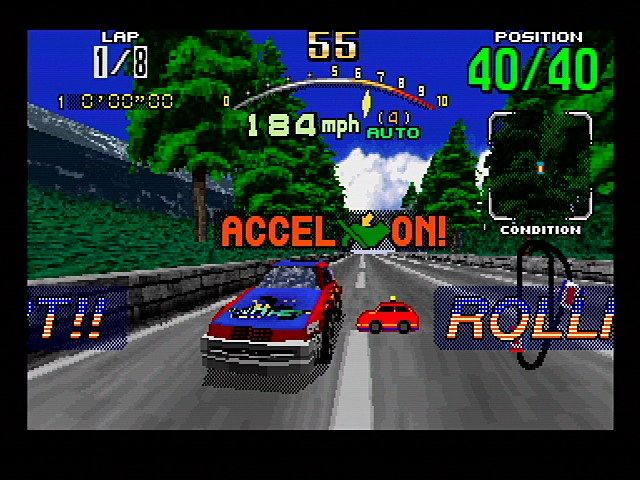
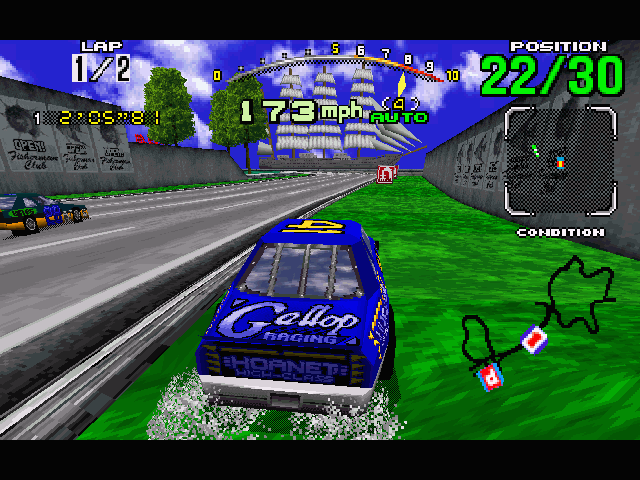
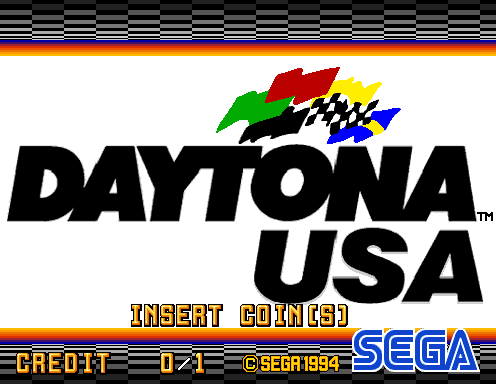
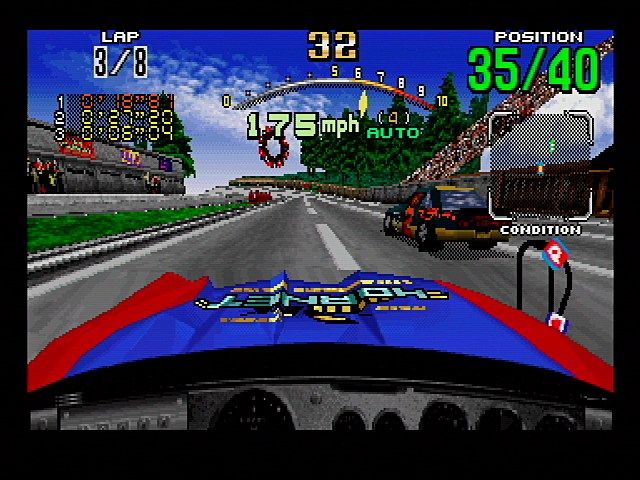
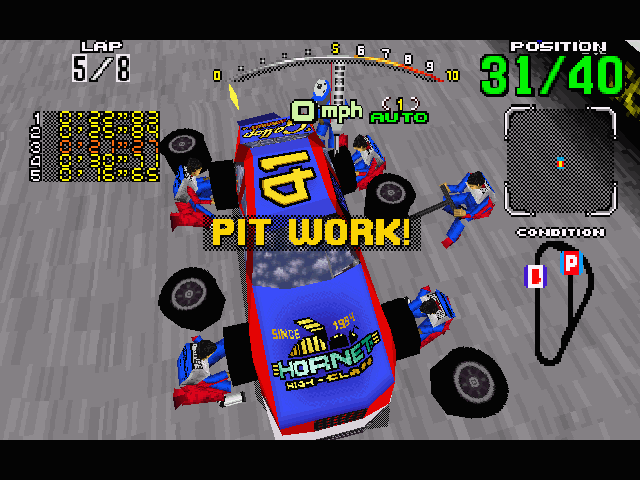



Reviews
There are no reviews yet.